26 Things To Know About Growing Lucky Bamboo In Water
This a fascinating and unusual houseplant that’s truly an attention-getter. Although it grows in soil, my experience is with growing Lucky Bamboo in water. I’ve gotten quite a few questions and comments about this plant. I want to share with you what I’ve learned about caring for and growing Lucky Bamboo.
Botanic Name: Dracaena sanderiana. Lucky Bamboo isn’t a true bamboo. Another common name for it is Ribbon Dracaena or Ribbon Plant.
Growing Lucky Bamboo in Water
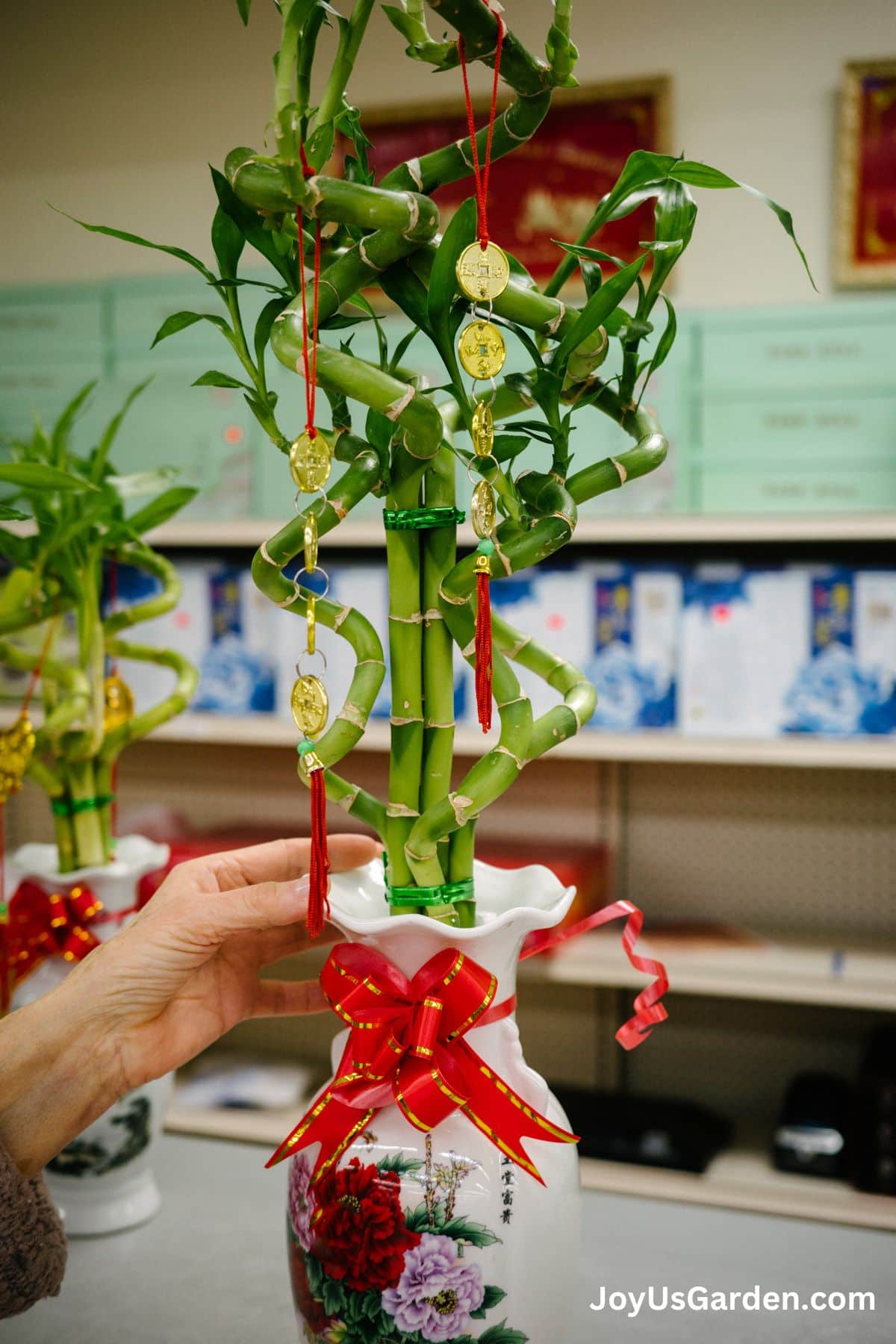
Light
1) Lucky Bamboo is often billed as a low-light houseplant. I’ve had the best results growing it in medium indirect light conditions.
2) Low light doesn’t mean little light or no light. The lower the light conditions you have this plant in, the less growing it’ll do. Also, the growth coming off of the stalks (also called stems or canes) will become leggy and thin stretching toward the closest light source.
3) Even though it does well in natural light, it’ll burn with too much sunlight. Keep it out of the hot, direct sun and away from hot window glass.
I accidentally left mine in an east-facing window one July for about an hour (I’m in the Arizona desert so the sun is strong and plentiful here) and a little bit of the foliage burned. You can see what sunburn looks like on this plant towards the end of this post.
Lucky Bamboo stalks are also called stems or canes.
Water
4) If you’re noticing a slimy build-up in your Lucky Bamboo’s water, it’s most likely algae.
Algae needs the sun to grow and can build up in glass vases and containers where the light gets through. Keep it out of the sun, especially when the temps are warmer. Be sure to change the water to fresh water on a regular basis and clean the vase to get any algae off the sides or bottom.
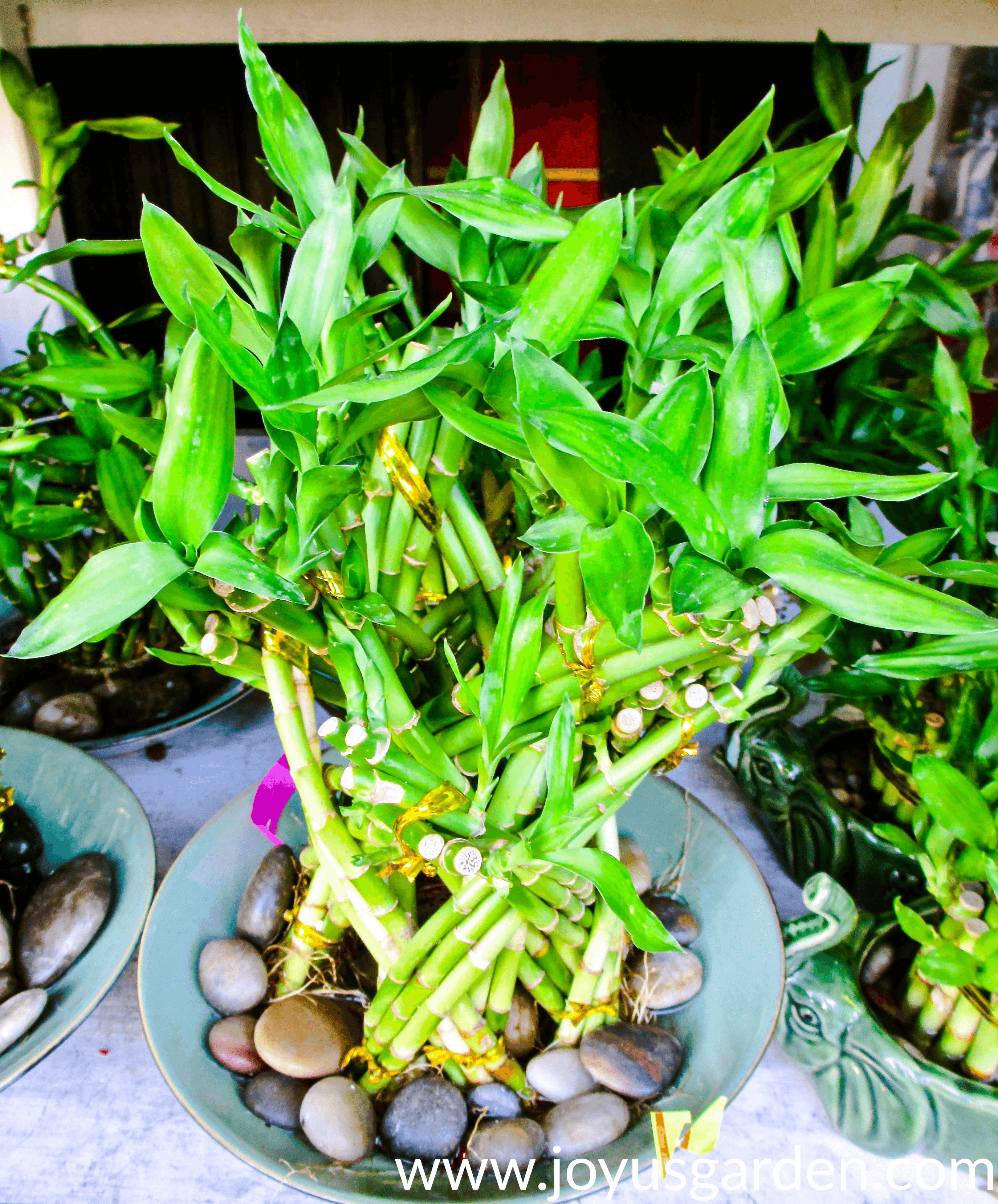
5) Speaking of changing the water, I do it every 2-3 months along with cleaning the vase. Bacteria can form on the roots. Stagnant water can get “funky” especially when warm. Lucky Bamboo is also subject to fungus and mold on the roots so changing the water and cleaning the vase as needed will help.
6) Lucky Bamboo can also be grown with pebbles or glass chips in the vase or dish. It’s commonly sold in arrangements this way because many people like the look. You also need to thoroughly clean the pebbles or glass chips on a regular basis (how often depends on the growing conditions in your home) to prevent bacteria from building up on them too.
7) I keep the water level 1-2″ above the roots. The higher the water level, the higher up the roots will form and grow. The look of roots growing up and down the stalks is one I don’t like. I’d avoid keeping a taller vase full of too much water because the stalks might eventually rot out.
Here’s a post full of Lucky Bamboo Care Tips you’ll find helpful if you’ve never grown this plant before.
Leaves
8) Brown tips on the leaves with yellowing portions above are most likely due to fluorides and salts in your tap water. Lucky Bamboos are very sensitive to this and for this reason, I switched to using bottled water. It’s inexpensive (around $.99 for a gallon) and lasts me 6 months or so for both arrangements.
As I’m updating this post, I now have this tankless R/O system installed in my new home. It has a re-mineralization cartridge that puts the good minerals back in. Here in Tucson, the water is hard so this is what I use to water all of my indoor plants.
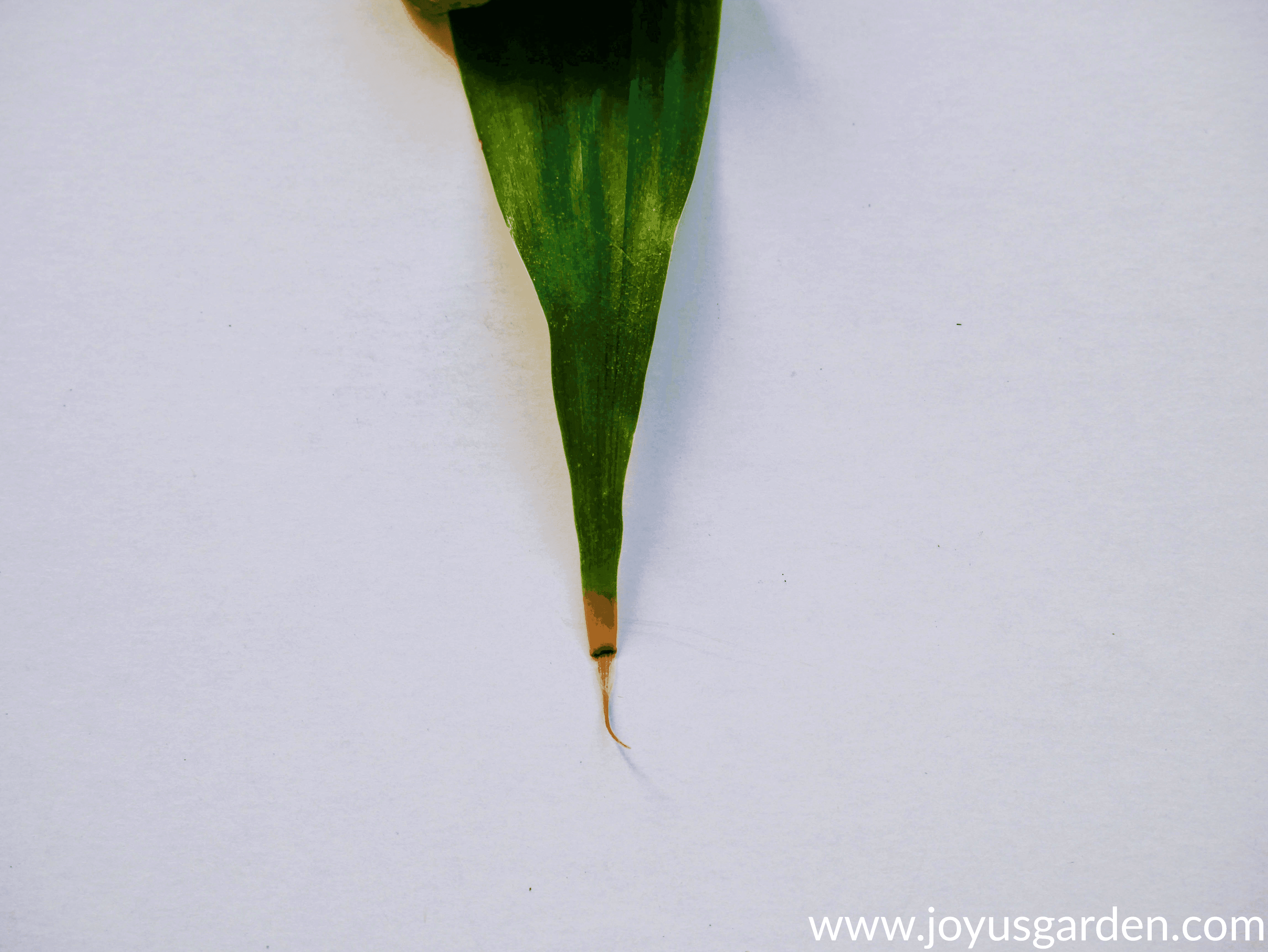
9) Yellow leaves and leaf tips are usually due to age or salts in the water. Small brown tips are due to the dry air in our homes. This is true of many houseplants.
10) The lower leaves slowly die as the plant gets taller. It’s how dracaenas grow. Cut or pull off any dead leaves, and your plant will look better.
11) Lucky Bamboo does well in bright light but will burn in prolonged sunlight. The second to last photo shows you what it looks like – scorched and a bit bleached out.
Container Size
12) Just because a Lucky Bamboo is growing in water doesn’t mean it’s not subject to getting potbound.
I needed to get a wider vase for my spiral arrangement because the roots are looking crowded. My smaller arrangement with multiple stalks which I gave away was getting tight in the container also. It was in a very shallow dish and the water was evaporating out faster than I wanted it to.
Its new owner (my friend!) has put it into a larger dish and replaced some of the dead stalks (stems or canes) and it’s doing great.
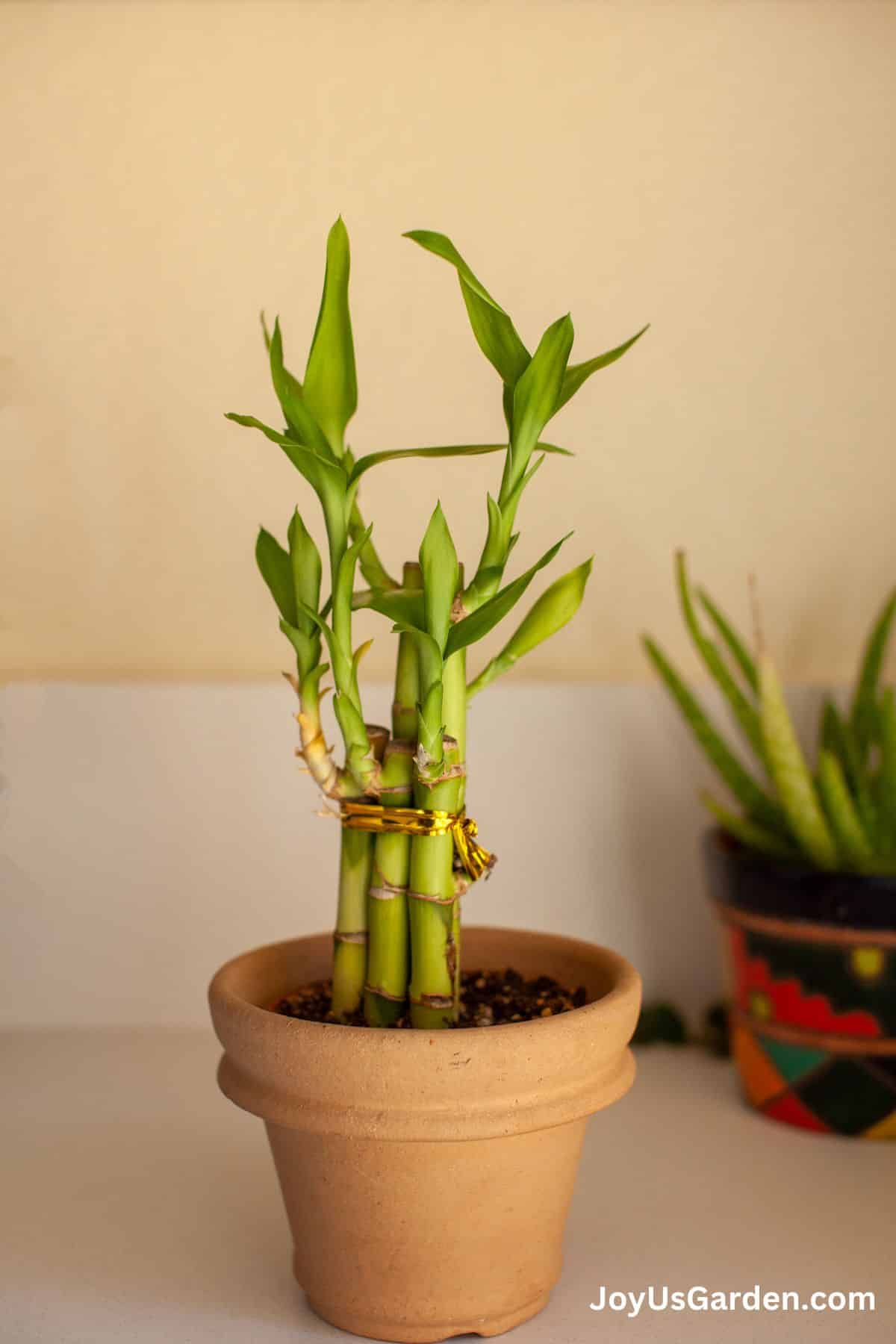
Growing Lucky Bamboo In Water vs Soil
13) Although they’re most commonly sold in water, Lucky Bamboo grows in soil in its natural environment. It’s more commonly sold in select nurseries, grocery stores, and Asian markets as stems and/or arrangements in water than in soil.
14) As to transferring from water to soil or vice versa, I have no experience doing with either one. I’ve never grown it in soil until now but have heard it’s good not to let the soil go dry.
There are varying debates as to whether Lucky Bamboo grows better in soil or water. I’ve heard success stories of transferring it from water to soil but none of transferring from soil to water. If you decide to try growing yours in soil, make sure the mix has good drainage.
Some Of Our General Houseplant Guides For Your Reference: Guide To Watering Indoor Plants, Beginner’s Guide To Repotting Plants, How to Clean Houseplants, Winter Houseplant Care Guide, Plant Humidity: How I Increase Humidity For Houseplants, Buying Houseplants: 14 Tips For Indoor Gardening Newbies
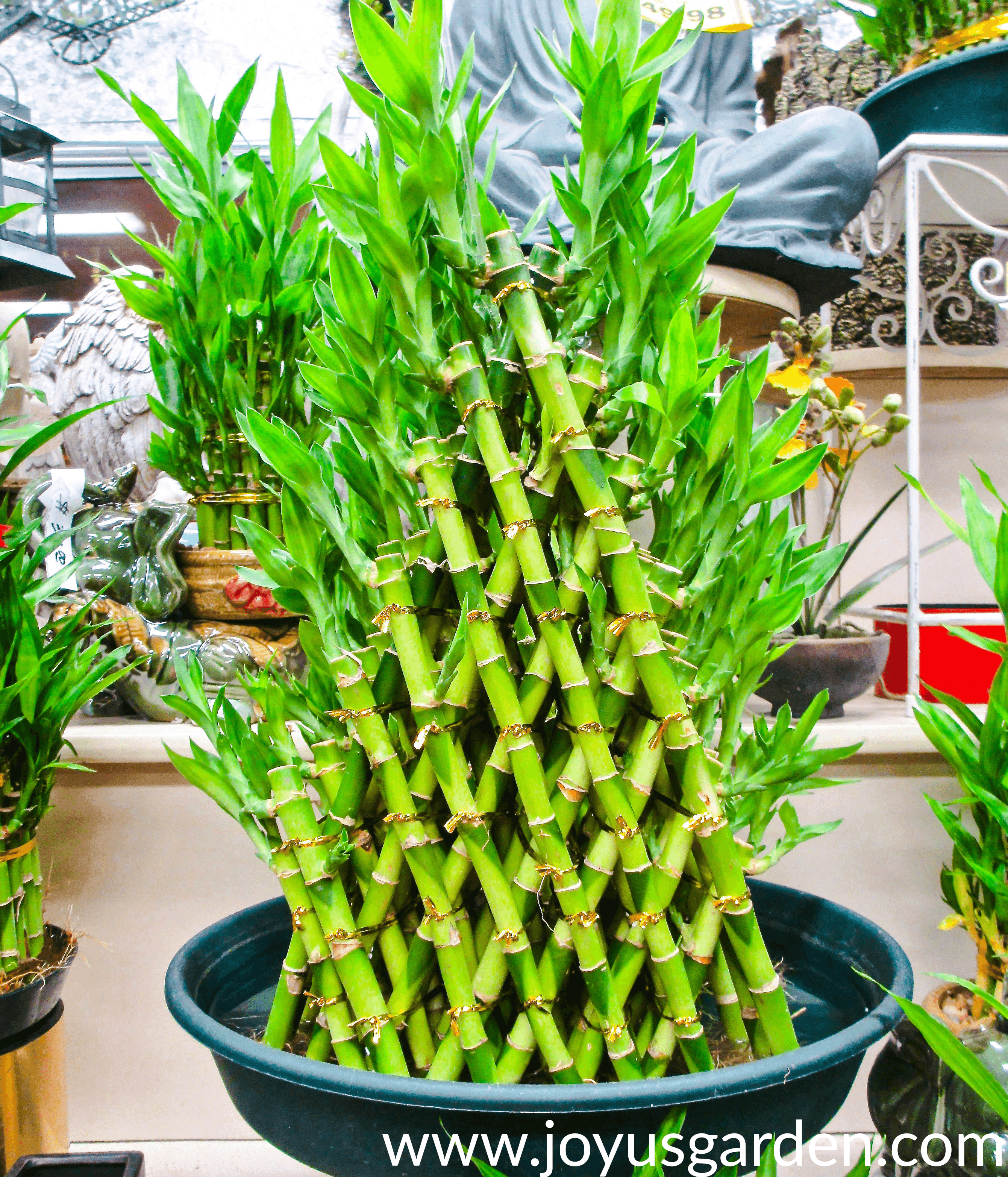
Pruning
15) If you cut a stalk down, the stalk itself won’t grow any taller than the cutting point. What grows and makes this plant grow taller is the new foliage growth that emerges from that stalk.
16) You can cut the canes down to make them shorter. You can also cut the stems with the foliage off to reduce the height. Either way, new shoots will eventually form off the canes.
17) As a Lucky Bamboo grows, it’ll lose lower leaves. It’s the growth habit of all dracaenas. Cut those dead leaves off; your plant will look better.
My spiral Lucky Bamboo was getting leggy a few years ago so I pruned it down. You can see How I Trimmed It Here.
Fertilizer
18) There are specific Lucky Bamboo fertilizers on the market. Don’t use the fertilizer or food you routinely use for your houseplants in soil.
I was gifted a few bottles of Super Green and add a bit of it to the water every time I change it over.
19) If you use too much fertilizer and/or do it too often, the roots of your Lucky Bamboo will eventually burn and the stalks will turn yellow.
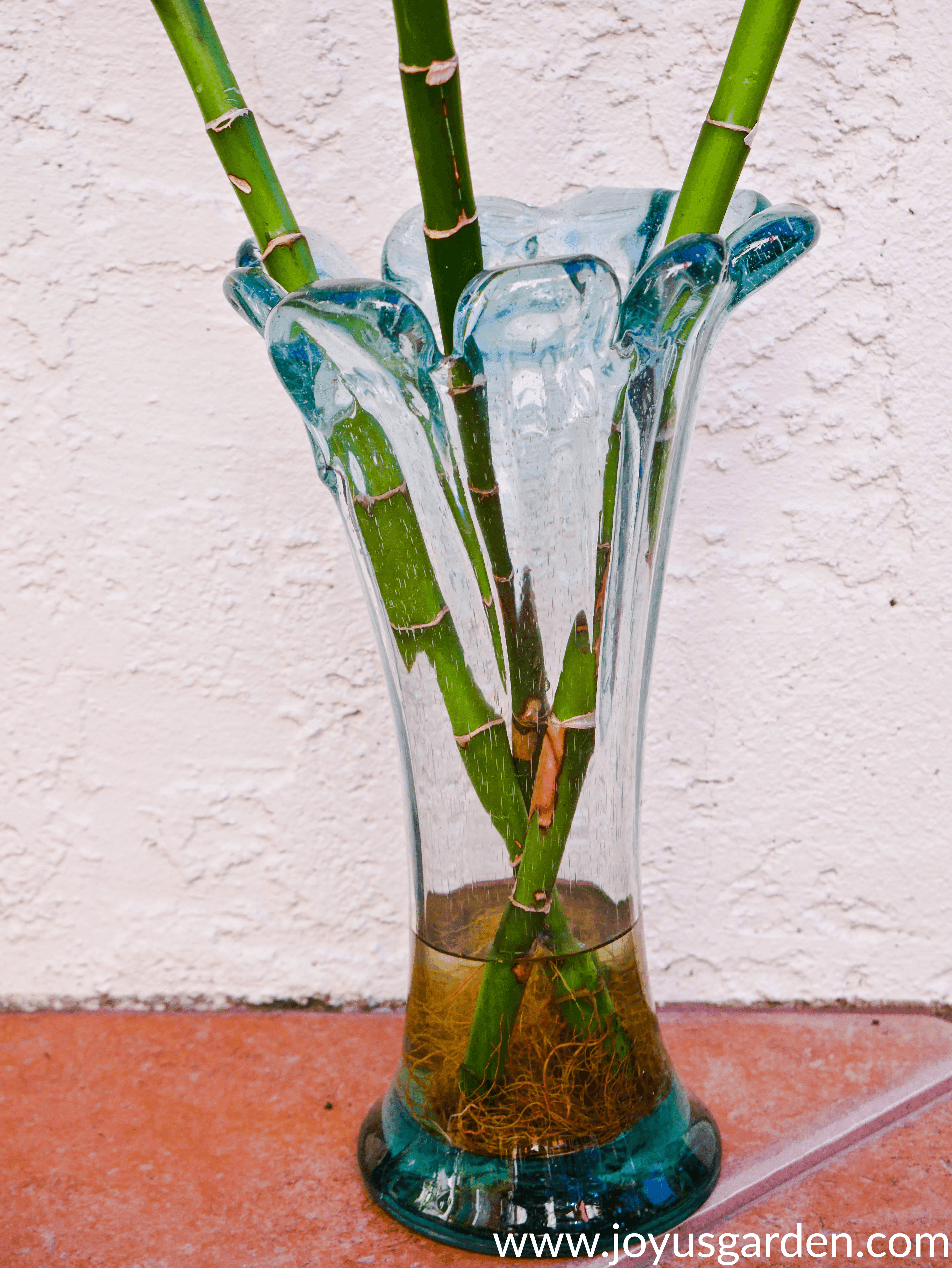
Pet Safety
20) Regarding this plant being safe for pets, I’d say no. Lucky Bamboo isn’t specifically listed on the ASPCA website as being toxic to pets, but dracaenas are. Because it’s a dracaena, take heed.
Pests
21) Spider mites are common pests that can infest Lucky Bamboos. I’ve heard mealybugs can be an issue too.
My Lucky Bamboo Got Spider Mites a while back. You can see what I did to get rid of them, and how I prevent another infestation.
Yellowing Stalks
22) Lucky Bamboo stalks that turn yellow don’t turn green again. They’ll turn brown and eventually die.
There are a few causes of yellowing stalks that I know of. My small arrangement in a shallow container dried out a number of times. Five or six of the stalks ended up yellowing and dying.
Other reasons for yellowing stalks that I know of are an accumulation of fluorides and salts in the water as well as over-fertilizing.
Here are some of our houseplant guides you may find helpful: 6 Low Maintenance Plants For Travelers, 11 Pet Friendly Houseplants, Tips For Buying Houseplants, Best Low Light Indoor Plants, Easy Care Office Plants, 7 Easy Care Floor Plants, 7 Easy Tabletop & Hanging Plants
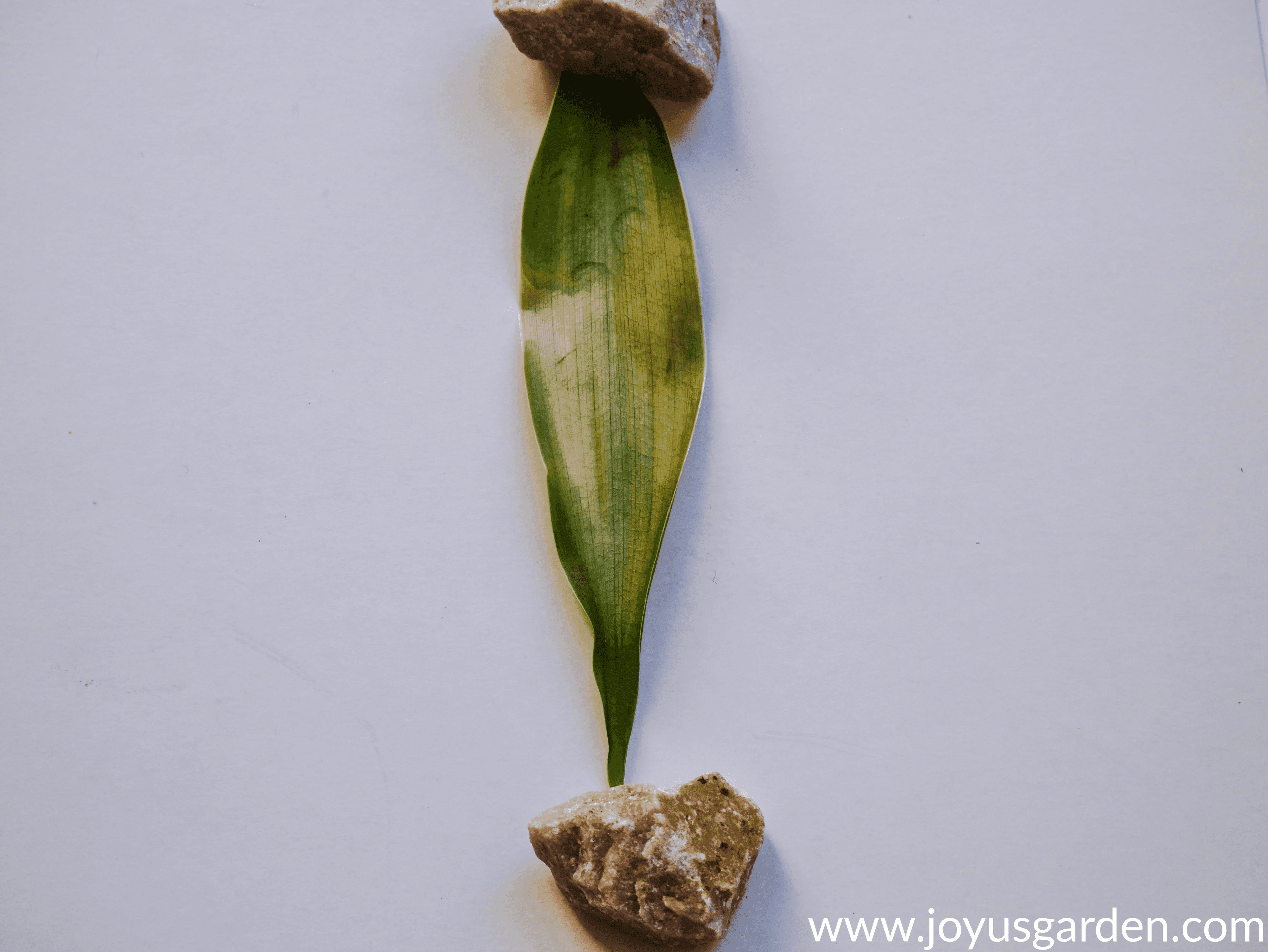
Temperature
23) Lucky Bamboo likes warm temperatures. Keep it away from any cold drafts.
Longevity
24) As to longevity, I’m not 100% sure how long a Lucky Bamboo growing in water actually lasts. The longest I’ve had one for is eight years. There are some specimens at the Lee Lee Market here in Tucson that must be at least 15 years old.
How to Train
25) This plant is available in crazy forms, arrangements, and patterns. I didn’t train my Lucky Bamboo stalks to grow in a spiral form, the grower I bought them from did the training. There are tutorials to show you how, but they are also plenty of growers who sell online that offer a variety for you to choose from.
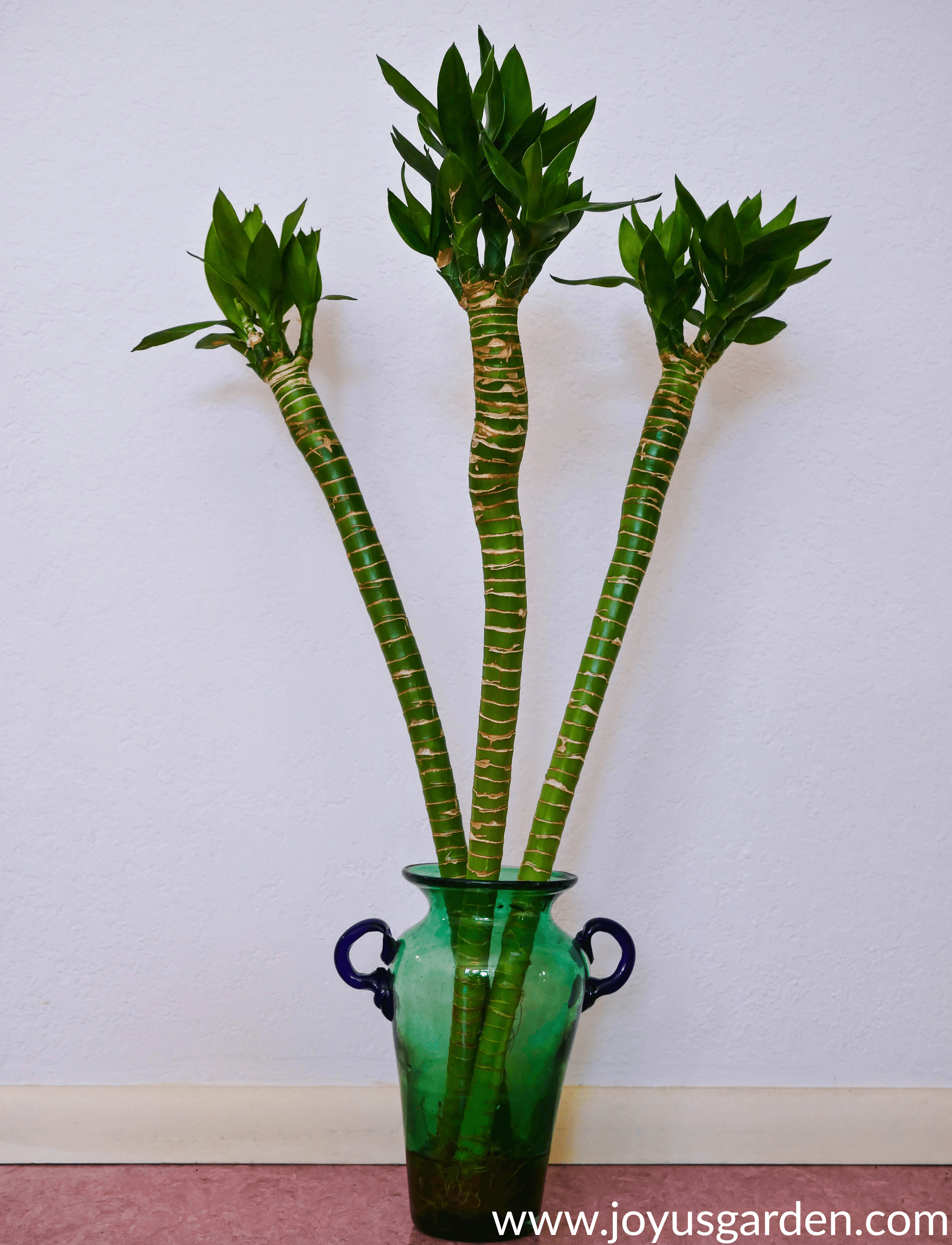
26) Growing Lucky Bamboo In Water Care Summary
I find Lucky Bamboo to be easy to care for and grow.
Here’s a rundown of how I maintain mine here in the Arizona desert: It’s placed in a spot with indirect sunlight (moderate light exposure) and gets no direct sun. I change the water and wash out the glass vase every 2-3 months.
Filtered water is used in the vase instead of tap water. The foliage is sprayed (the undersides especially) along with the stalks every 1-2 months. When we get the summer monsoon rains, I put the arrangement outside a couple of times. They love rainwater.
Here’s a post full of Lucky Bamboo Care Tips you’ll find helpful if you’ve never grown this plant before.
Note: This post was published on 10/17/2018. It was updated on 3/03/2023 with more information & some new images.
This doesn’t have anything to do with proper care but it’s included because this plant is known for this one thing. Lucky Bamboo is said to bring luck and good feng shui according to Chinese culture. I keep the spiral arrangement in the guest room.
The number of stalks has different meanings and mine with three signifies happiness, good luck, and good fortune. Whether it’s true, I’m not sure. I believe it because I like this plant and who wants bad luck?!
A new Lucky Bamboo plant is a fun one to add to your collection and doesn’t take up much room at all. Plus, no soil is required!
Happy gardening,

This post may contain affiliate links, you can read our policies here.

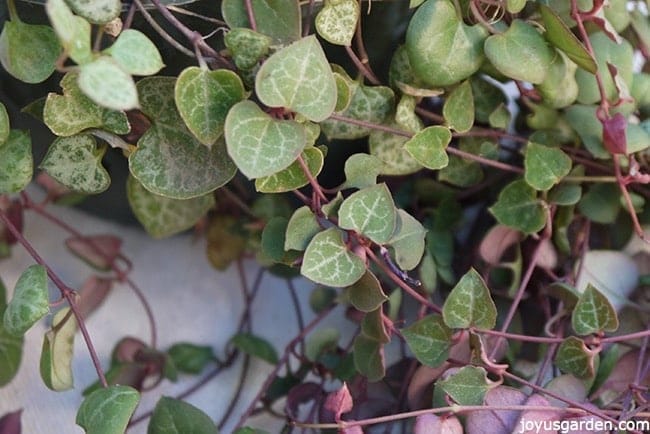
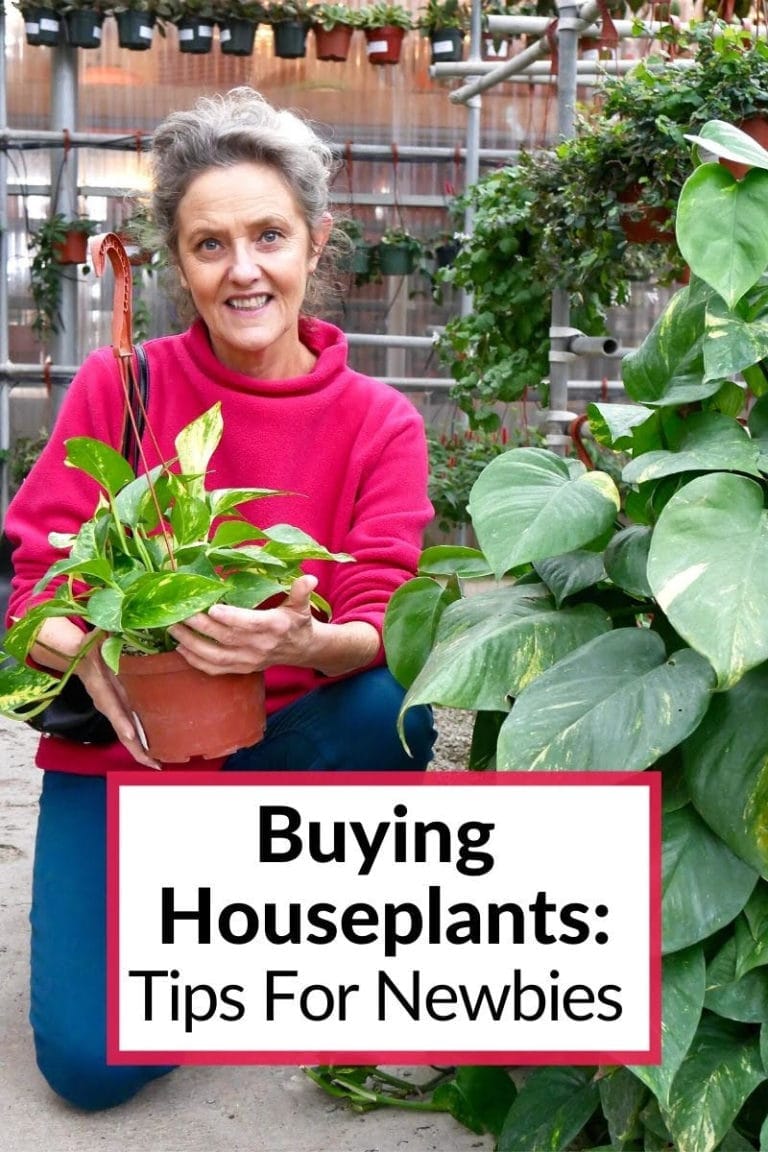
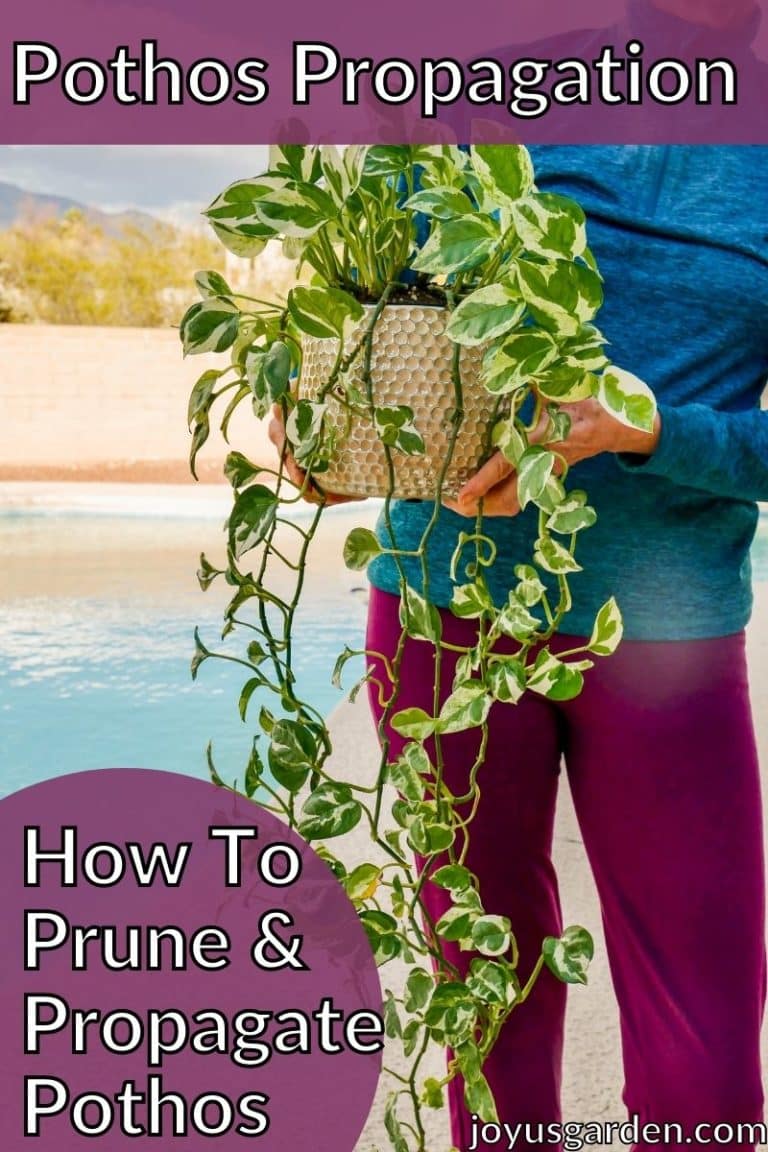
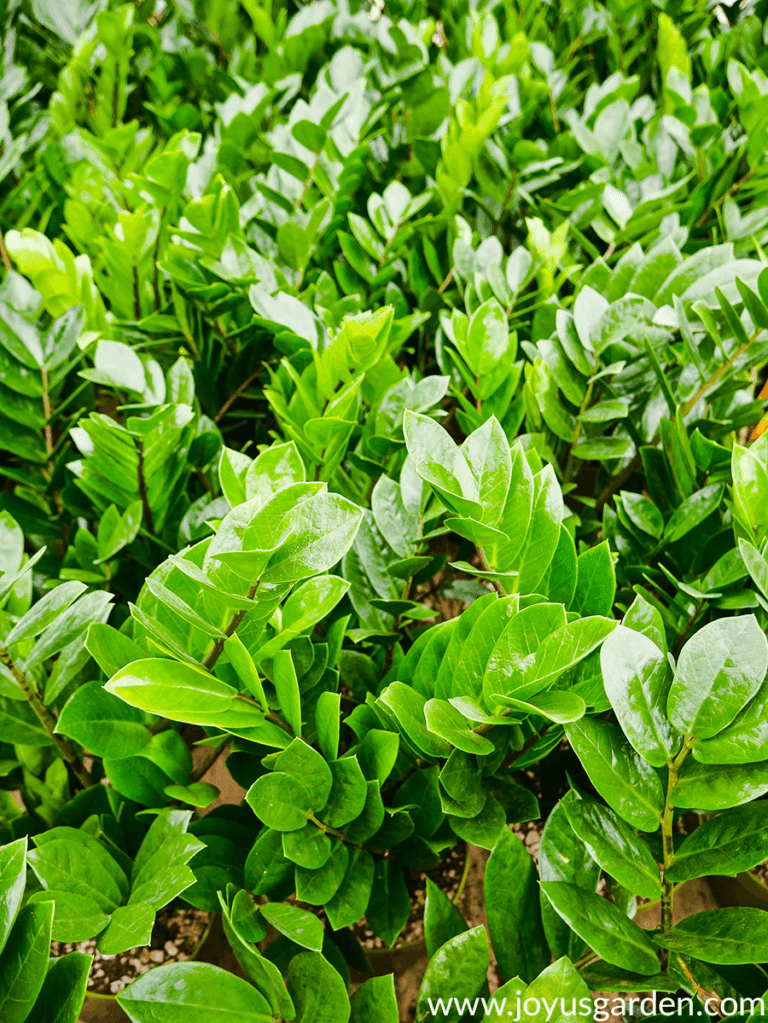

Can you cut the stalks
Tyvm
Hi Diane – I cut mine as an experiment a few months ago. Sprouts are appearing. I didn’t cut off too much & the stalks have healed. Post & video on that coming in a few months. Nell
I just discovered a white crystal-like glob on the leaves of my Lucky Bamboo which I grow inside in a container with water. I have never seen this before and need to know how to get rid of it, and hoe to prevent it from happening again. Help! Carol
Hi Carol – It could be the sugary secretion from an insect spider mites or mealybugs. Check to see if there are any pests hanging out in the nodes or leaf undersides. nell
Hi Nell – I just saw your article on Lucky Bamboo. When I was living in Nj, I had 3 bamboo growing in a short cylinder vase with water. They lived there with no problem for years. Eventually, they moved to Hilton Head, SC+ continued to do well for 4 years. Now in GreenvilleSC + having a tough time with them.
But with the help of your post + especially your photos I will make a few changes.
Thx so much, you were so helpful.